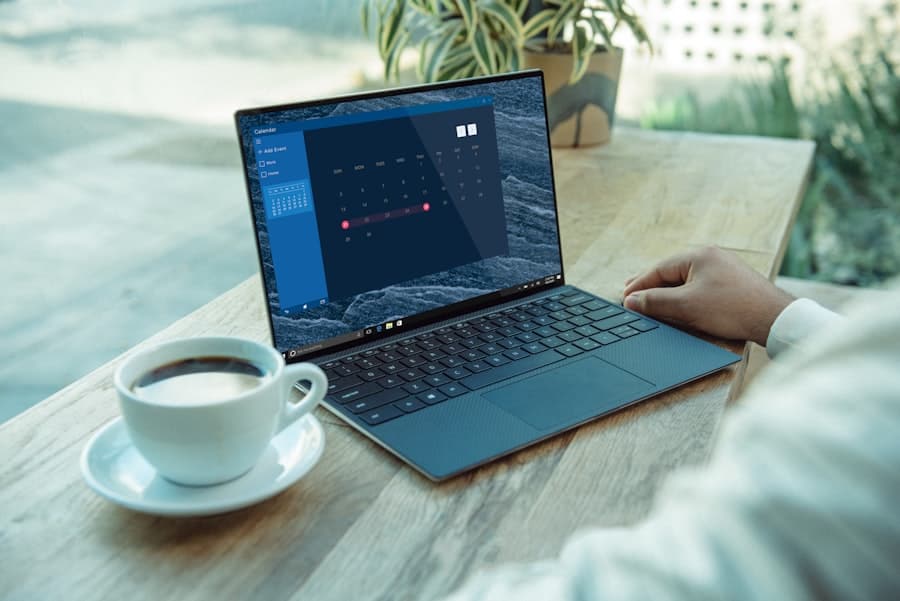In recent years, the landscape of laptop technology has undergone a remarkable transformation, with foldable screens emerging as a groundbreaking innovation. This technology, which allows screens to bend and flex without compromising functionality, has captured the attention of both consumers and manufacturers alike. The allure of foldable screens lies not only in their aesthetic appeal but also in their potential to redefine how we interact with our devices.
As laptops become increasingly integral to our daily lives, the introduction of foldable screens promises to enhance user experience by offering greater versatility and adaptability. Foldable screens represent a significant departure from traditional rigid displays, enabling a new form factor that can cater to various use cases. Imagine a laptop that can seamlessly transition from a compact device for on-the-go productivity to a larger screen for immersive media consumption.
This flexibility opens up a world of possibilities, making foldable laptops an exciting frontier in personal computing. As we delve deeper into the evolution of this technology, it becomes clear that foldable screens are not just a fleeting trend but a pivotal advancement that could shape the future of laptops.
Key Takeaways
- Foldable screens in laptops are a new and innovative technology that is revolutionizing the way we use and interact with our devices.
- The evolution of foldable screen technology has seen significant advancements in durability, flexibility, and display quality, making it a viable option for laptop manufacturers.
- Potential benefits of foldable screens in laptops include increased screen real estate, improved portability, and enhanced multitasking capabilities.
- Challenges and limitations of foldable screens in laptops include durability concerns, high production costs, and potential issues with creasing and display quality.
- The impact of foldable screens on laptop design and portability is significant, as it allows for more compact and versatile form factors that cater to the needs of modern users.
The Evolution of Foldable Screen Technology
From Prototypes to Commercial Products
Companies like Samsung and LG have been at the forefront of this innovation, showcasing prototypes and eventually bringing commercial products to market. The first wave of foldable devices primarily focused on smartphones, with models like the Samsung Galaxy Fold setting the stage for what was possible. These early iterations demonstrated the potential of foldable technology but also highlighted challenges such as durability and usability.
Expanding to Laptops
As manufacturers learned from these experiences, they began to apply the same principles to laptops, leading to the introduction of devices that combine the functionality of a laptop with the flexibility of a foldable screen. This evolution marks a significant milestone in the quest for more versatile computing solutions.
A New Era of Versatility
The development of foldable screen technology has opened up new possibilities for device design and functionality. As the technology continues to advance, we can expect to see even more innovative applications of foldable screens in various industries.
Potential Benefits of Foldable Screens in Laptops
The integration of foldable screens into laptops offers numerous advantages that can enhance user experience and productivity. One of the most significant benefits is the ability to create larger displays without increasing the overall footprint of the device. A foldable laptop can provide a spacious screen for multitasking or creative work while remaining portable enough to fit into a backpack or briefcase.
This feature is particularly appealing for professionals who require a balance between screen real estate and mobility. Moreover, foldable screens can facilitate innovative usage scenarios that traditional laptops cannot accommodate. For instance, users can position their devices in various orientations—such as tent mode for presentations or tablet mode for casual browsing—allowing for greater flexibility in how they interact with their laptops.
This adaptability can lead to improved ergonomics and comfort during extended use, as users can adjust their devices to suit their preferences. Additionally, the potential for split-screen functionality on a single display can enhance productivity by allowing users to run multiple applications side by side without the need for an external monitor.
Challenges and Limitations of Foldable Screens in Laptops
Despite the promising advantages of foldable screens, several challenges and limitations must be addressed before they can become mainstream in laptop technology. One of the primary concerns is durability; while manufacturers have made strides in creating robust foldable displays, they still face scrutiny regarding their long-term reliability. The folding mechanism itself can be a point of failure, and users may worry about wear and tear over time, especially with frequent use.
Another challenge lies in software optimization. Many applications are designed with traditional screen dimensions in mind, which can lead to compatibility issues when used on foldable displays. Developers must adapt their software to take full advantage of the unique form factors that foldable laptops offer.
This requires collaboration between hardware manufacturers and software developers to ensure a seamless user experience. Until these challenges are adequately addressed, consumer confidence in foldable laptops may remain tentative.
The Impact of Foldable Screens on Laptop Design and Portability
The introduction of foldable screens is revolutionizing laptop design, pushing manufacturers to rethink traditional form factors and aesthetics. With the ability to create thinner and lighter devices, designers are now exploring new ways to integrate foldable technology into their products. This shift not only enhances portability but also allows for more creative designs that can appeal to a broader audience.
The sleek lines and modern aesthetics associated with foldable laptops can attract tech-savvy consumers looking for cutting-edge devices. Portability is another critical aspect influenced by foldable screens. As laptops become more compact without sacrificing functionality, users can enjoy greater freedom in how they carry their devices.
The ability to fold a laptop into a smaller size makes it easier to transport, whether commuting to work or traveling for leisure. This newfound portability aligns with the growing trend of remote work and digital nomadism, where individuals seek devices that can keep up with their dynamic lifestyles.
The Future Applications of Foldable Screens in Laptops
Looking ahead, the potential applications of foldable screens in laptops are vast and varied. Beyond traditional computing tasks, these devices could play a significant role in creative industries such as graphic design, video editing, and gaming. The ability to manipulate screen size and orientation could provide artists and designers with new tools for their craft, allowing for more immersive experiences and enhanced creativity.
Furthermore, as technology continues to advance, we may see foldable screens integrated into hybrid devices that blur the lines between laptops and tablets even further. Imagine a device that can transform from a full-fledged laptop into a tablet or even a digital canvas with ease. Such innovations could redefine how we think about personal computing and open up new avenues for interaction and productivity.
Consumer Adoption and Market Trends for Foldable Screen Laptops
As foldable screen technology gains traction, consumer adoption will play a crucial role in determining its success in the laptop market. Early adopters are often drawn to innovative features and cutting-edge designs, but widespread acceptance will depend on factors such as price, performance, and reliability. Manufacturers must strike a balance between offering advanced technology and ensuring that it remains accessible to a broad audience.
Market trends indicate a growing interest in versatile devices that cater to diverse user needs. As remote work becomes more prevalent and consumers seek multifunctional gadgets, foldable laptops may find their niche within this evolving landscape. Companies are likely to invest in marketing strategies that highlight the unique benefits of foldable screens while addressing concerns about durability and software compatibility.
As awareness increases and more options become available, consumer confidence in foldable laptops is expected to rise.
The Future Outlook for Foldable Screens in Laptop Technology
In conclusion, foldable screens represent an exciting frontier in laptop technology that holds immense potential for transforming how we interact with our devices. While challenges remain regarding durability and software optimization, ongoing advancements in materials science and design are paving the way for more robust solutions. As manufacturers continue to innovate and refine their offerings, we can expect to see an increasing number of foldable laptops entering the market.
The future outlook for foldable screens is bright, with applications extending beyond traditional computing tasks into creative fields and hybrid devices. As consumer adoption grows and market trends shift toward versatility and portability, foldable laptops may become an integral part of our digital lives. Ultimately, this technology has the power to redefine personal computing, offering users unprecedented flexibility and functionality in an ever-evolving technological landscape.
In a recent article discussing the future of foldable screens in laptop technology, it is interesting to note how advancements in laptop design are shaping the way we interact with technology. This article highlights the potential for foldable screens to revolutionize the way we use laptops, offering a more versatile and portable option for users. For more information on the latest laptop technology, check out this article on an original home for technology news and reviews.
FAQs
What are foldable screens in laptop technology?
Foldable screens in laptop technology are a new innovation that allows the screen of a laptop to be folded or bent without damaging the display. This technology enables the creation of devices with larger screens that can be easily transported and used in various configurations.
How do foldable screens work in laptops?
Foldable screens in laptops use flexible display technology, such as OLED or AMOLED, that allows the screen to bend without breaking. This technology typically involves using a thin, flexible material for the display panel and incorporating a hinge mechanism that allows the screen to be folded or unfolded.
What are the potential benefits of foldable screens in laptops?
The potential benefits of foldable screens in laptops include the ability to create devices with larger displays that can be easily transported, increased versatility in terms of how the device can be used, and the potential for new form factors and designs that were not possible with traditional rigid displays.
What are the challenges of implementing foldable screens in laptops?
Challenges of implementing foldable screens in laptops include ensuring the durability and longevity of the flexible display material, developing reliable hinge mechanisms that can withstand repeated folding and unfolding, and addressing potential issues related to screen creasing or distortion over time.
What is the future outlook for foldable screens in laptop technology?
The future outlook for foldable screens in laptop technology is promising, with ongoing research and development efforts focused on improving the durability, performance, and cost-effectiveness of flexible display technology. As these technologies continue to advance, it is likely that foldable screens will become more common in laptops and other portable devices.



